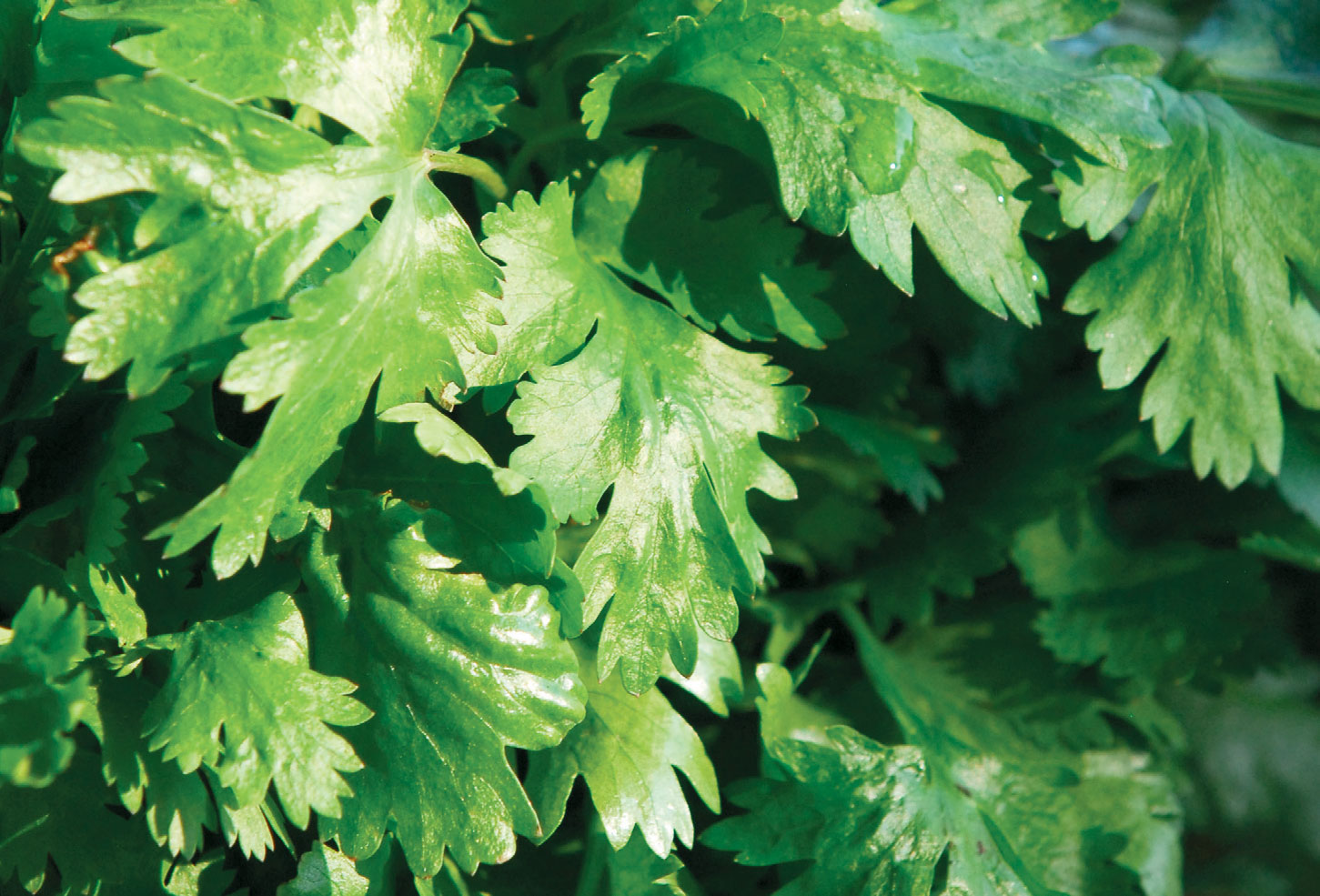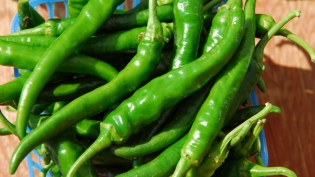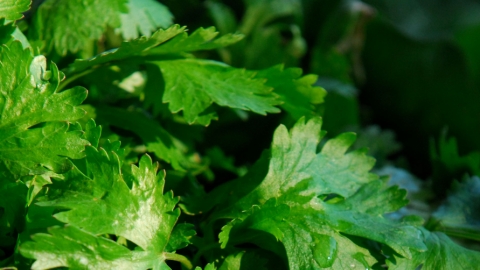Twice the Spice
Cilantro does double duty when it comes to health
A staple in the herb garden, as well as in many Latin, Asian and Indian dishes, cilantro is easy to grow and provides a whole season of flavor.
“Cilantro is best planted in the springtime to get multiple harvests that can be enjoyed throughout summer and beyond,” says Stephanie Spock of Rolling Hills Farm in Lambertville. “It’s generally cut 3 inches above the crown, where it can then re-grow,” she says, adding that both the leaves and the stems can be chopped and used in cooking.
Cilantro is unique, Spock notes, in that it’s cold hardy and often can survive the winter when properly covered. It can also handle a bit of shade.
“The partially shaded spots in your garden that aren’t quite sunny enough for tomatoes are an excellent place to fill with cilantro as well as leafy salad greens,” she says.
Cilantro does not like heat and can quickly bolt in the hot summer temperatures. Though, if it does, all is not lost. The seed cilantro produces is the spice we know as coriander.
“Once cilantro has gone to seed, the whole plant is cut and can be hung upside down to dry,” says Spock. Dry the plant in a dry, dark room, then store it in a sealed glass jar until ready to use. “You can save the dried leaves for making tea, and the seeds can either be used as a spice or saved for growing future plants.”
Cilantro and coriander are often used in small amounts to flavor a dish; one would have to consume a lot to absorb a significant amount of nutrients.
“Cilantro contains small amounts of potassium, magnesium, vitamin C, and B vitamins, but to get a significant amount of each, one would have to consume about 3 ounces—which is a lot,” says Diane Rigassio Radler, Associate Professor of the Department of Nutritional Sciences at Rutgers University in Newark. “However, being creative by juicing it or using it in smoothies is a good way to get more out of it nutritionally.”
Cilantro is held
in high regard
in Ayurveda,
an ancient form
of wellness
rooted in India.
Radler advises using whole coriander and grinding it fresh, and using fresh cilantro rather than dried.
“Both contain polyphenols, which are antioxidants, and adding foods like these to your diet in any amount can help reduce oxidative damage to the body.”
Cilantro is held in high regard in Ayurveda, an ancient form of wellness rooted in India.
“The seed and the leaf have two very different sets of energetics,” says William Courson, Director of the New Jersey Institute of Ayurveda in Montclair. “While the seed has a heating energy, the leaves have a cooling energy, and are often used to ease gastrointestinal issues like IBS, bloating, gas, and to aid in digestion,” he says. “Typically, plants with heating properties are used to aid in digestion—but cilantro is one of the few used that’s known as a cooling herb in Ayurveda.”
The cooling quality is also used to help soothe inflammatory skin reactions such as burns and rashes, as well as to ease temporal headaches.
It is also utilized to support urinary tract health.
“Cilantro is probably the first choice in Ayurveda to treat UTIs,” says Courson, who recommends macerating a few handfuls of cilantro and letting it soak in a few liters of water overnight before drinking. “It’s a fast-acting anti-inflammatory, and can stop a UTI in its tracks when used early on during the first signs of infection, often helping people avoid having to go the antibiotic route.”
Cilantro is also used in battling other types of infections
“The antibiotic qualities present are used to treat certain bacterial and fungal infections, and have been shown to be effective against streptococcus, E. coli, and salmonella,” says Courson. “It’s like a pharmacy in a single plant.”
The use of coriander in herbal medicine is significant, and affects other functions of the body.
“Traditionally, it was used in a topical ointment or compress for arthritic pain,” says David Winston, RH (AHG) of David Winston’s Center for Herbal Studies in Washington.
“In animal studies, coriander has been shown to reduce cholesterol, blood sugar levels, and have hepatoprotective effects, protecting the liver,” he adds. “It also [can reduce] blood pressure.” Winston explains that one reason it may help lower blood pressure is because of its diuretic effects.
“The simplest way to lower blood pressure is by reducing the volume of fluids in the body—if you urinate more, you have less fluid, and your blood pressure goes down.”
Winston adds that there are a few unique characteristics of cilantro that can impart a negative effect on some individuals.
“There is a small to moderate percentage (4% to 14%) [of people] who, instead of tasting the herbal lemony taste of cilantro, taste soap,” says Winston. “Additionally, coriander is in the Apiaceae family, as are carrots, fennel and dill. All members of this family have lots of furanocoumarins, and when the fresh plant is handled, and then the skin is exposed to strong sunlight, it can cause photodermatitis for those with sensitive skin,” he says, adding that this is true of both cilantro and coriander.
For those of us who can enjoy cilantro, now’s the perfect time. Whether on tacos or Thai food, cilantro adds a bright burst of flavor to your favorite summer fare.









